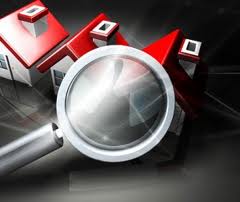If there is one type of mortgage borrower whose profile has been scrutinized the most by the financial markets, it’s the sole proprietor.
If there is one type of mortgage borrower whose profile has been scrutinized the most by the financial markets, it’s the sole proprietor. Self-employed individuals used to be able provide no income verification for a faster process. Because the paradigm has shifted so far, these individuals have a more challenging time qualifying for a mortgage than most.
Accountants would in most cases advocate self-employed individuals write off as much of their expenses as possible in order to show less income, while this is quite favorable from an accounting standpoint, it also reduces that taxable income lenders need to offset the liability (mortgage payment).
The self-employed borrower traps when getting a mortgage are as follows:
- Not showing income on the schedule C-showing little income on your schedule C reduces the amount of income you’ll need to offset your liability payment (new mortgage), or worse, taking a loss thereby showing negative dollars earned. In order to borrow mortgage money, take your annual income (your profit) for the last two years add them together then divide by 24, that’s your income that will be used to offset the mortgage payment (including taxes and insurance). The income will needed to be at least 55% greater than the mortgage payment assuming no other monthly liabilities. If you know you need to show more income for loan qualifying, consider the house payment you think you can afford then divide that number by .45% and that will be the income you’ll to show.
- Not being self-employed for two years-not to say your loan will be denied if you will have less than two years of self-employed history. If you have less than 24 months, be prepared to document a net profit with both a current year to date as well as your most recent year’s self-employed income tax returns.
- Not being able to document/source large cash deposits-any deposits going into your bank account have to be part of your regular income and will need to be documented as part of your business.
- Not having a third-party business sign off-this means either a business license to show you have a license to conduct business for whatever your conducting business as or a CPA letter showing they have filed self-employed income tax returns for you for the last two years. Another option, for showing your business is in existence by a third-party is making it visible online.
- Using funds from a business account in a mortgage transaction-are any fees being put into the transaction out-of-pocket? Are you using a down payment? If the funds for the transaction are coming from a business account, the mortgage lender will asses your ability to use those funds as part of your regular cash flow. In other words, if your regular cash flow, is such that it would make sense those funds would be plausible for use in the mortgage transaction, you’ll be alright. However, if the business funds do not support a way of how those funds were originally generated, you’ll need to provide a CPA letter showing that the use of those funds do not impact the financial integrity of your business.
- Business liabilities-monthly debt obligations show up on the credit report, the business pays, you’ll need to support the fact the business actually does pay these debt obligations. If these are business debts, but are paid for personally, these debts cannot be omitted and they will count against your borrowing power.
If you are self-employed thinking about getting a mortgage and want to find out how much you can qualify for based upon your Schedule C income, you can download our self-employed worksheet and fill in the fields or you can contact us for a complementary online mortgage loan qualification. Position your self to avoid the biggest self-employed borrower traps when getting a mortgage.




